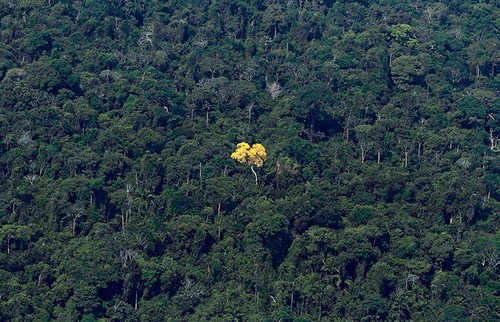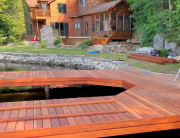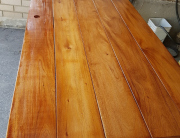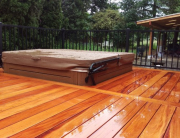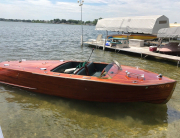Who Is Driving The Extinction Of Ipe wood decking and other Tropical Hardwoods?
Ipe wood decking
In a bid to safeguard an already fragile natural economy, the Brazilian government has seriously considered imposing a sanction on all exports to North America of Ipe wood. Without such action, which culminated from radical internal pressures, Ipe wood would have remained in a precarious state. If harvesting is allowed to continue, Ipe wood would be eventually non-existent. With actions designed to preserve hardwood, we may be no longer tethering at the brink of an extinction.
However, before such action can be commended, we must note that there has been no domino effect of the preservation of other tropical hardwoods. Indeed, other hardwoods such as massaranduba, garapa, cumaru, tigerwood, and jatoba are still being driven towards oblivion. Unless similar preventative action is taken, the extinction of these hardwoods is still plausible. This is due to a multi-billion dollar export market in hardwoods, fragmented governance and policy on both the industrial and legislative level, and an unethically conscious consumer market.
The protagonists of the extinction of hardwoods have long been hailed as top-level bureaucrats satisfying the economic need of foreign exchange. However, a thorough analysis reveals that, in fact, the individual consumer perpetuates a vicious cycle of supply and demand. This leads to the destruction of large tracts of old-growth rainforest for this prized possession. Inevitably, individual consumers may be the greatest threat regarding the extinction of hardwood species.
What drives consumer behaviour?
Tropical hardwoods are of exceptional quality in both aesthetics and architectural structure. At the hands of a craftsman, these hardwoods such as Ipe wood decking or Genuine Mahogany wood have superior grain quality and excellent workability. For the end user, tropical hardwoods hold an exquisite lustre appeal.
Consistent in coloring, these hardwoods are ideal for fine finished floors, outdoor decks, the hollow of musical instruments, and even as complimentary design to the upholstered interior of luxury yachts. Aesthetically, these hardwoods tend to age beautifully while surpassing other woods in longevity due to their natural resistance to rot, decay and insect infestation.
It is almost a bargain on one’s first and then frequent purchase of tropical outdoor hardwood. Their full bodied qualities provide astute and functional architectural pieces which far outweigh their premium costs as dictated by supply chains.
Indeed, possession of a solid piece of hardwood is an entry card to the old boy’s club. The grandeur and sophistication associated with a finely finished hardwood, such as Genuine Mahogany wood, is highly regarded by many. This ultimately propels a viscous cycle of ‘desire’ within the value chain; from the initial supplier (harvester) to shipping and logistics and finally the end consumer. Tropical hardwoods, including Genuine Mahogany wood, continue to be a prized commodity as always.
Supply and demand are in stiff competition. The triggers lie on both ends of the spectrum. On the one hand, a demand for high value species (HVS) drives both legal and illegal logging for the export market of hardwood. On the other hand the insatiable desire for best grade wood drives production (supply). These factors both converge at the consumer.
Other factors contributing to the extinction of tropical hardwood
Of course, it would be superficial and premature in argument to place the blame of any hardwood species’ extinction squarely on the consumer. But they bite the bait and if any lessons are to be learnt from governance and policy, it is that bureaucracy and laxness prevail where economic gains are to be made – in other words, a blind eye is turned to gray and black markets. With tropical hardwoods comprising 5% of Brazil’s national GDP[1], it is no wonder that the ethics and sustainability of hardwood forestry is missing in political rhetoric.
Certainly, this rhetoric exists in limited forums; there is a growing number of civil society and private actors preoccupied with the preservation of the Central and Southern American forests. These include the Fundaçao Getulio Vargas (with support from Rede Amigos da Amazônia), WWF-Brasil and Traffic who launched a series of roundtables to facilitate a multi-stakeholder process that seeks to encourage legality of hardwood timber logging.[2]
Such efforts have spurred from an ethically conscious movement which led to the accreditation of sustainably sourced and well managed forests by the Forest Stewardship Council (FSC). Championed as the global steward spearheading the preservation of endangered genus tree species, a FSC stamp often placed at the foot-end of timber or accompanying certificate is often imagined to guarantee the integrity of a tropical hardwood.
The reality on the ground
But commercial movements like these only look good on paper; there are no tangible benefits felt on the ground. In reality, the hardwood timber industry operates in a distorted and unregulated space. This vacuum lends itself to corruption.
Falsified forest management plans are presented to legalise unsustainably sourced hardwoods; complex forestry regulations and bureaucratic processes to obtain licences deter businesses from ‘best practice’. High taxes imposed on large industries discourage the formalisation of businesses and, in addition, local regulators of forest management operate independently – causing fragmentation within the industry. These issues stem from complex and bureaucratic policies imposed by the government in an effort to circumvent illegal hardwood logging.
Rather than comply with these regulations, some hardwood suppliers work within the cracks, finding loopholes to meet the supply and demand balance. A labyrinth of well-intended policy instead becomes the catalyst for rogue behavior. The black hardwood market implicitly builds up an interconnected value chain parallel to the legal market, undercutting legal profits by 40%. Underground certifiers falsify industry accreditation so the economy continues to churn whilst forests are razed to the ground. All the while, exports continue, purchases of tropical hardwood are made and independent participants continue to rally for the preservation of these woods.
We have 5 years and counting; there are no infinite resources of your favourite piece of wood.
Isn’t time you started asking “Who does the buck stop with?”
[1] Word Resources Institute, ‘Levelling the playing field for legal timber in Brazil ’http://www.wri.org/blog/leveling-playing-field-legal-timber-brazil 25 Sept 2013 <accessed 20 Dec 2013> [2] Ibid